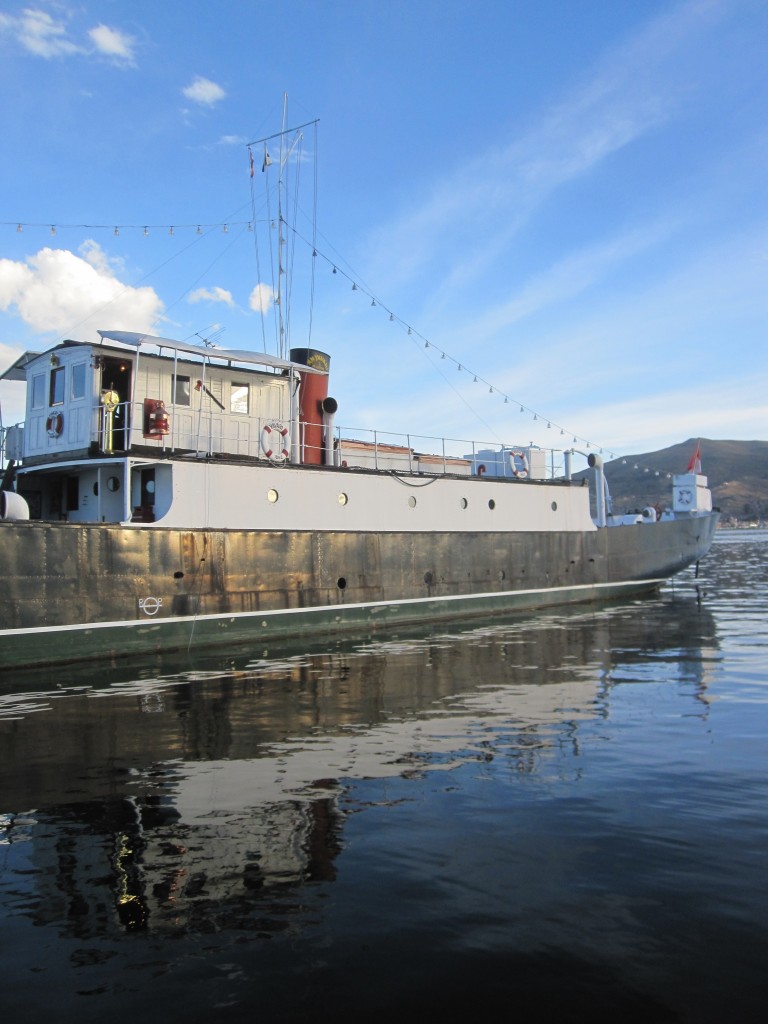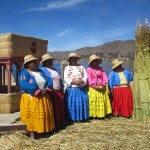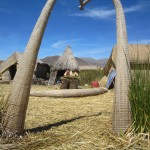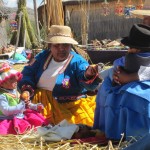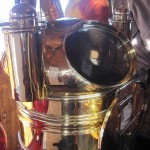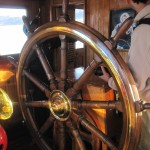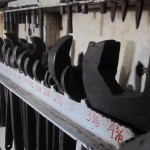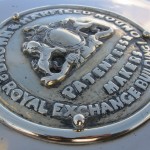Following the beautiful blue shore of Lake Titicaca, we crossed the border into Peru and the town of Puno. Two things immediately stuck us – firstly, rickshaws are back for the first time since Asia (going to have to give them a try!), and secondly, it’s absolutely freezing!
The cold is a bit odd since we’re on the same lakeshore (and hence altitude) as sunny Copacabana; it might have something to do with the city being in the shadow of a mountain for the afternoon. On our first night we needed all the extra blankets and layers we could muster, on the second the water tank above the hostel even froze solid according the owners!
Puno is the jumping off point for the lake’s famous floating reed islands, a big tourist trap but also a chance to see a way of life that has been relatively unchanged for generations. When the Incas conquered the area 500 years ago, the Uru people fled onto the lake, initially living in boats, and then on floating islands they made from reeds out in the middle of the lake. The 42 islands host a dwindling population of a few hundred that is arguably maintained only for tourism. with most now living on the mainland instead.
The islands require considerable maintenance, with new reeds laid on top of the old every two weeks or so, and an ongoing harvest to fulfil this need. You can imagine there’s also a bit of a fire risk with cooking on an island made only from dry reeds – the trick is apparently to insulate it using stones, and I guess there is at least plenty of water nearby! And no, we didn’t ask about how they cope with drinking the lake water that is also where the sewage goes…
Although one of the most tourist-filled things we’ve done in a long time, it was a fascinating view into a different way of life, cut off from much of modern life (even if the new introductions of solar panels are beginning to change that). It was also fabulously colourful, with the women in brightly coloured traditional dress giving us a chance to look inside their homes and meet their (very sweet) kids.
(Other) Simon and I also took the chance to visit an entirely different piece of heritage – the oldest steamship on the lake, the Yavari. It is quite a story, with it and a sister ship built in Birmingham (UK) in 1862, in 2766 iron parts, which were then ‘shipped’ to Puno – round Cape Horn to a town which is now in northern Chile, and then over the Andes to Puno, initially by train, and then by mule for the final stretch when the line ran out! This took an amazing six years! The ship was launched on Christmas Day 1870, and ran for many years ferrying passengers across the lake, with llama dung used instead of coal for the engines.
After being abandoned by the Peruvian Navy and left to rust, it was bought by a British woman for $5000 in 1982, and has been lovingly restored and is now a floating museum and mini-hotel. We were shown around by the ship’s engineer, a man who must be in his seventies and enthusiastically showed us every detail with a passionate explanation in Spanish. The place positively gleams with the polished brass and love and attention it has received, and we were similarly beaming after being shown around the cabins, engine room and bridge by someone who had clearly put their all into it. It was quite a contrast in waterbourne living to how we’d started the day, but just as eye opening and a great sample of another side to life on the lake.
Simon
- Locals on a reed island
- The water´s edge
- Reed huts
- Reed huts and the lake behind
- Local kids with their mothers
- Two children playing in the hut we visited
- Local women at the island
- The oldest steamship on the lake
- The Yavari in the late afternoon light
- Everything was amazingly polished!
- The ship´s wheel
- These are huge, that´s for a 4 1/8 inch nut on the right!
- Simon hauling the anchor, with the engineer looking on
- Made in the UK
- This is a three story slide!


